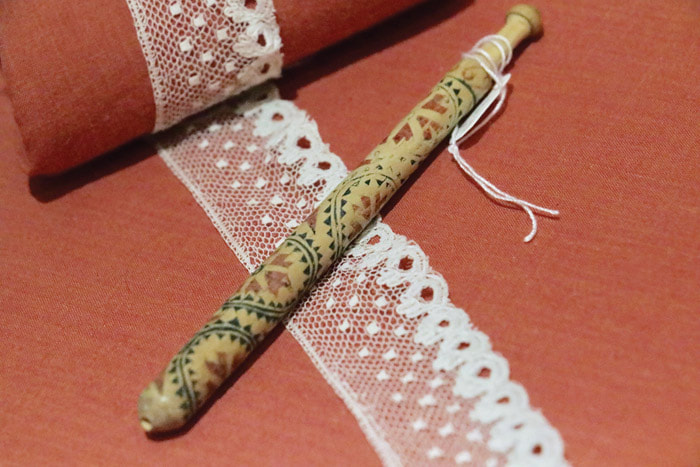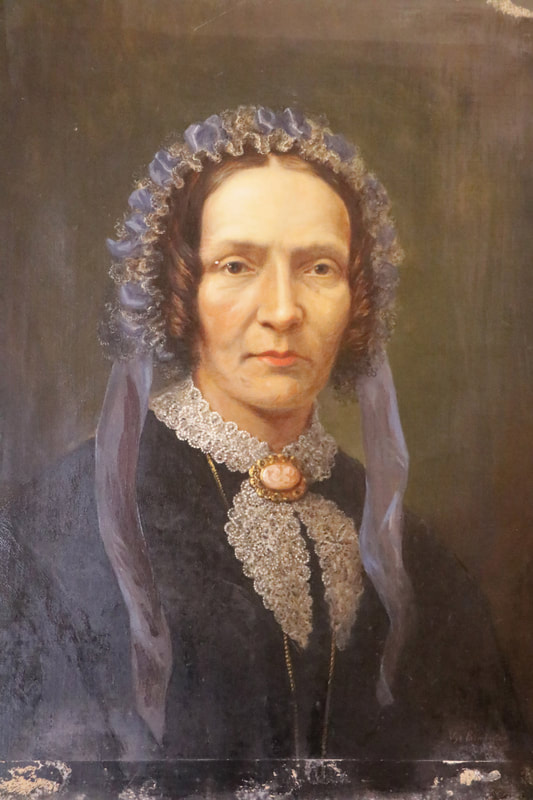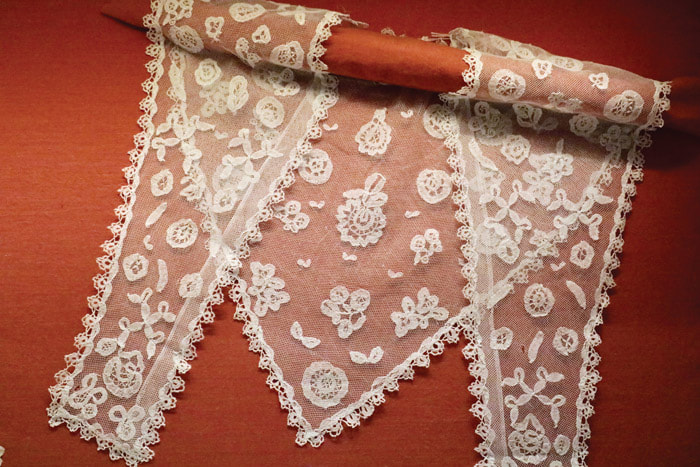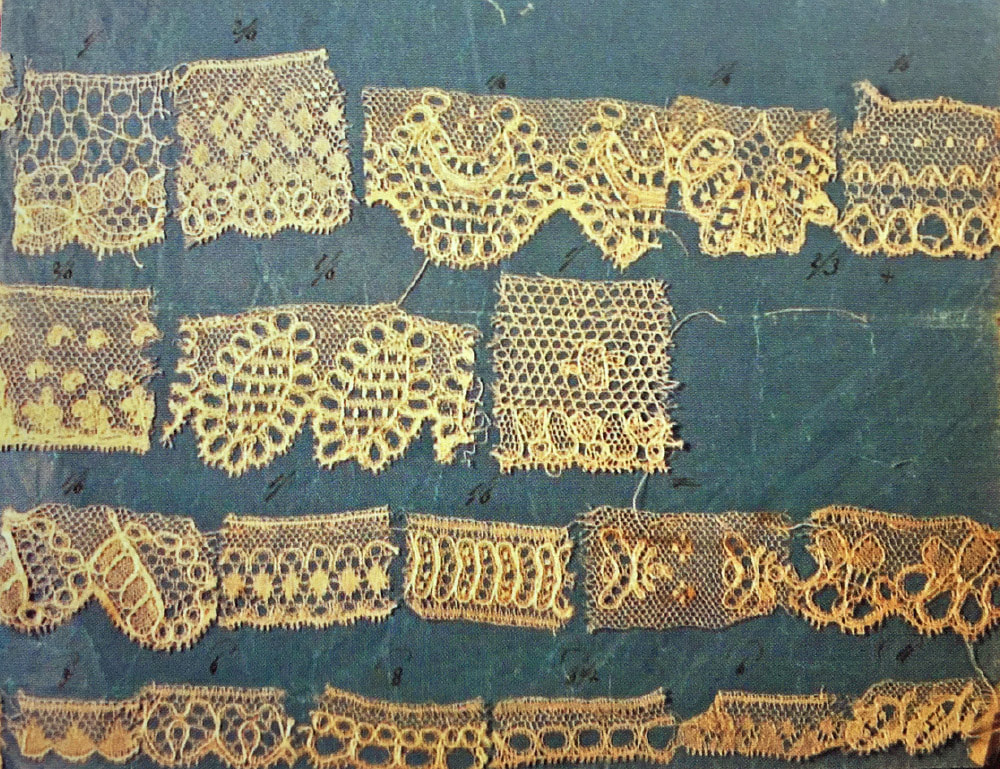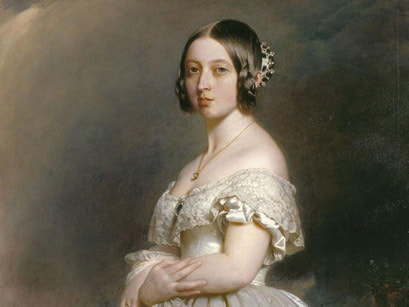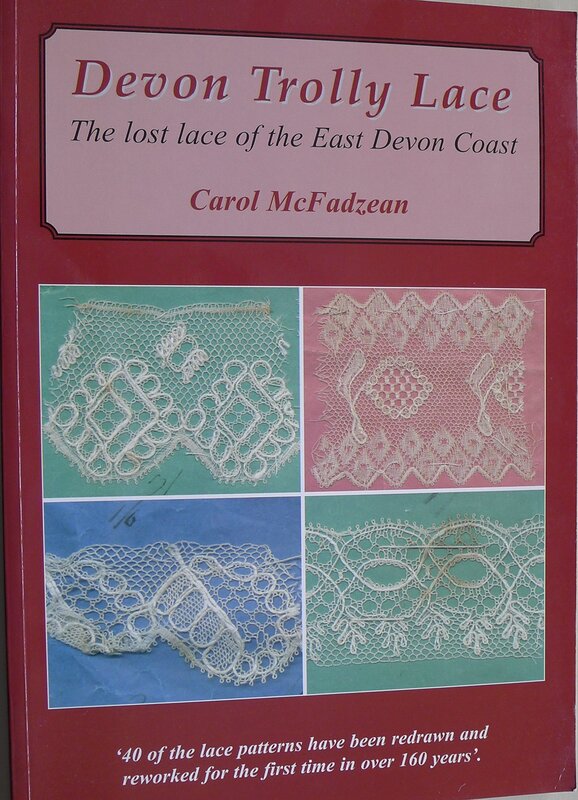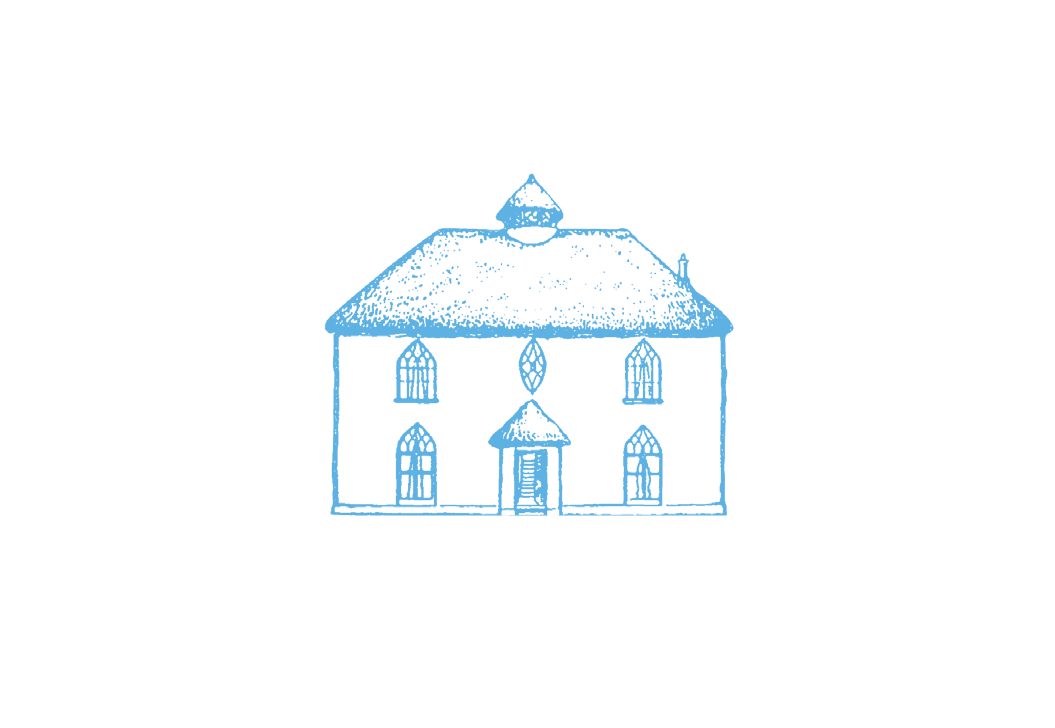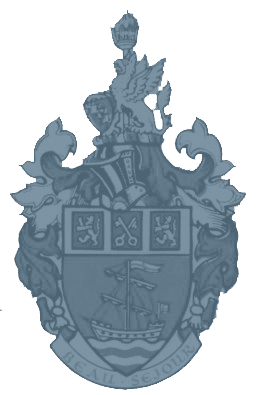lace at the fairlynch
Trolly Lace takes its name from the Flemish ‘Trolle Kant’, a kind of ribbon lace worked round and round a pillow, using a heavier thread known as a ‘cordonnet’ or ‘trolly’ to outline the design and fine thread for the net ground. The netting and the design is worked together and the width of the resulting lace, purchased to decorate the edges of collars, cuffs and flounces for at least 400 years, is generally between 1 – 10cms.
Trolly Lace making was not unique to East Devon, but it was a local speciality. A cottage industry employed hundreds if not thousands of homeworkers in our region and we have some very intricate and beautiful examples of their work in the Lace Room.
Trolly Lace making was not unique to East Devon, but it was a local speciality. A cottage industry employed hundreds if not thousands of homeworkers in our region and we have some very intricate and beautiful examples of their work in the Lace Room.
